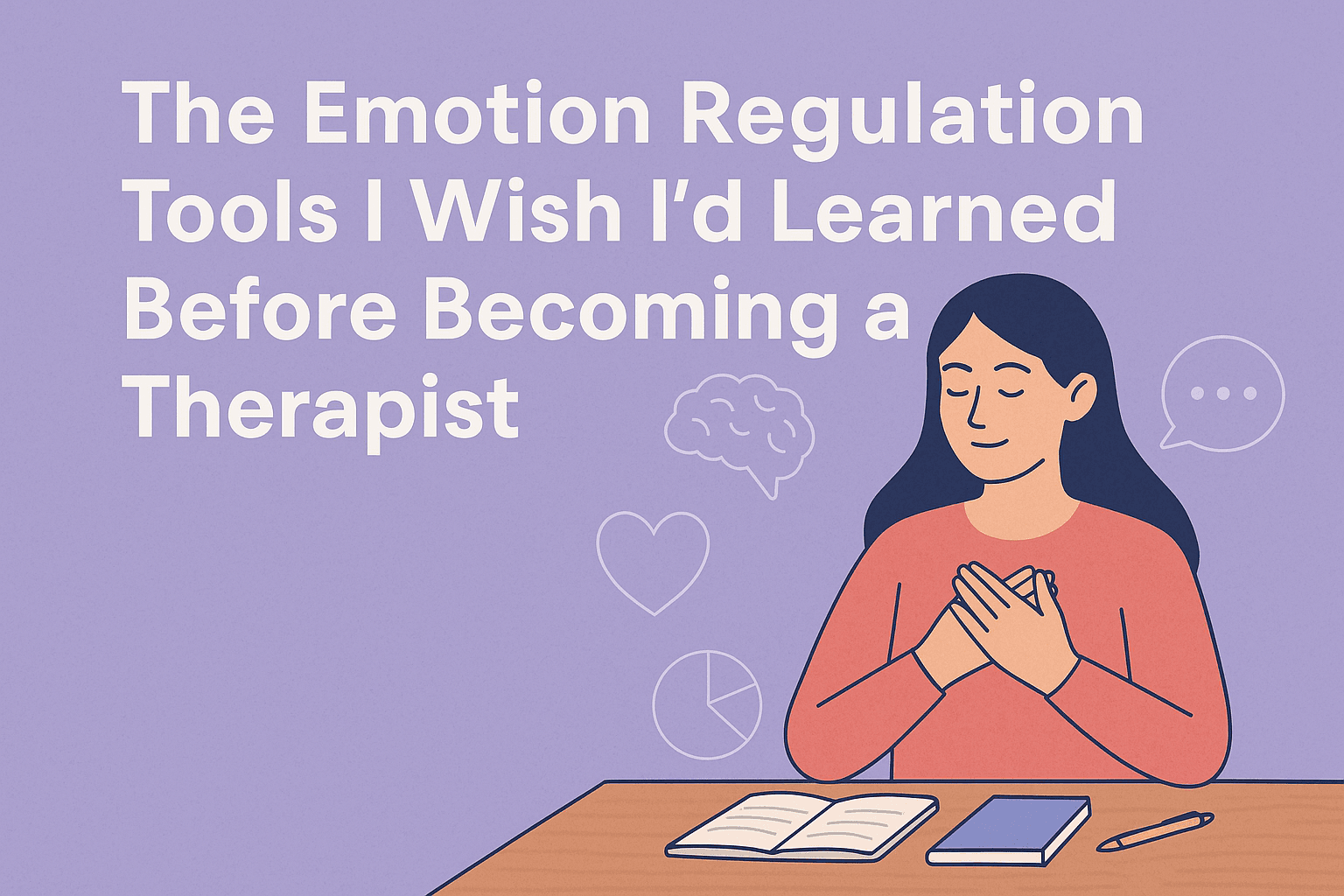
The Survival Kit for When Your Brain Won’t Shut Up (It’s Free!)
It starts out feeling helpful. Overthinking can look like preparation, planning, or protecting yourself. But if you’ve ever spent hours rerunning a conversation in your
For 25 years, I’ve been in the trenches, teaching practical, real-world strategies to manage tough emotions. Whether you’re a therapist looking for tools to help your clients or someone trying to get a handle on your own emotional rollercoaster, I’m your go-to resource. As a licensed therapist, trainer, and CEU facilitator, I’ve worked with thousands of people, from clinicians to clients, helping them wrestle emotional dysregulation to the ground.
Big emotions don’t have to be the enemy.
I’m here to help you—or the people you work with—take control of emotions and use them to build lives that work, that contain joy and purpose. Whether the issue is anxiety, anger, sadness, or anything in between, I’ve got evidence based frameworks and tools to help.













Struggling to manage emotions or ready to make real changes? I offer one-on-one therapy and coaching designed for you. With tools like DBT, mindfulness, and emotional regulation strategies, we’ll build a personalized plan to help you feel more balanced, confident, and in control of your life.
Looking to equip your staff with real-world tools? I offer customized trainings tailored to your needs—whether it’s DBT-based strategies, crisis management, or emotional resilience. Don’t miss my signature DBT Feelings First Aid workshops, packed with practical skills your team can use immediately to support students or clients during high-pressure moments.
Build, refine, or rescue your mental health program with expert support in design, evidence-based practices, staff training, and quality improvement. From big ideas to big impact, I’ll help you turn complexity into clarity—and good intentions into great outcomes.
Let’s make it happen!
Explore my collection of workbooks, worksheets, and tools designed to support both professionals and individuals. For therapists, these tools make it easy to teach skills in session. For personal use, they offer simple, step-by-step strategies to help you manage emotions and create positive change in your life.
Books By Suzette Bray
This page contains affiliate links. As an Amazon Associate, I earn from qualifying purchases.
Because I’m a giver, and sharing mental health tools just makes the world a little better.
From managing emotions to building resilience, get practical resources to help you navigate life’s challenges—no fluff, just what works.
Looking for practical tips on managing emotions and building resilience? My blog covers emotional regulation with evidence-based skills, helpful strategies, and real-world advice to help you—or your clients—navigate emotional challenges. Whether you’re a therapist or focused on personal growth, you’ll find actionable guidance to manage stress and improve relationships.

It starts out feeling helpful. Overthinking can look like preparation, planning, or protecting yourself. But if you’ve ever spent hours rerunning a conversation in your

Cravings don’t care if you’ve had a good day. Emotional spirals don’t ask if you’ve relapsed.They just hit—and you need tools that can hit back.

Ever freeze mid-conversation and forget every coping tool you’ve learned?Walk away from a session, a spiral, or a simple disagreement feeling wrecked?The problem isn’t you—it’s

In today’s fast-paced world, mental health challenges like anxiety, depression, and chronic stress are increasingly common. Fortunately, innovative therapy strategies are emerging, offering effective tools
Why You Need To STOP Calling Everyone a Narcissist!
Suzette Bray
Stop Overthinking in 3 Minutes | Quick Mental Health Reset
Suzette Bray
Mindful Detachment to Reduce Anxiety #overcomeoverthinking #mentalhealth
Suzette Bray
“Affiliate Disclosure: This site contains affiliate links, and I may earn a commission if you purchase through one of these links. As an Amazon Associate, I earn from qualifying purchases.”

Suzette Bray, Licensed Marriage and Family Therapist (LMFT) in California (LMFT37518) and Arizona (LMFT15569).
Copyright © 2025 Suzette Bray LMFT, All rights reserved. Powered by MHIS
Why You Still Want Them: Trauma Bonds & DBT Tools to Break Free
Suzette Bray